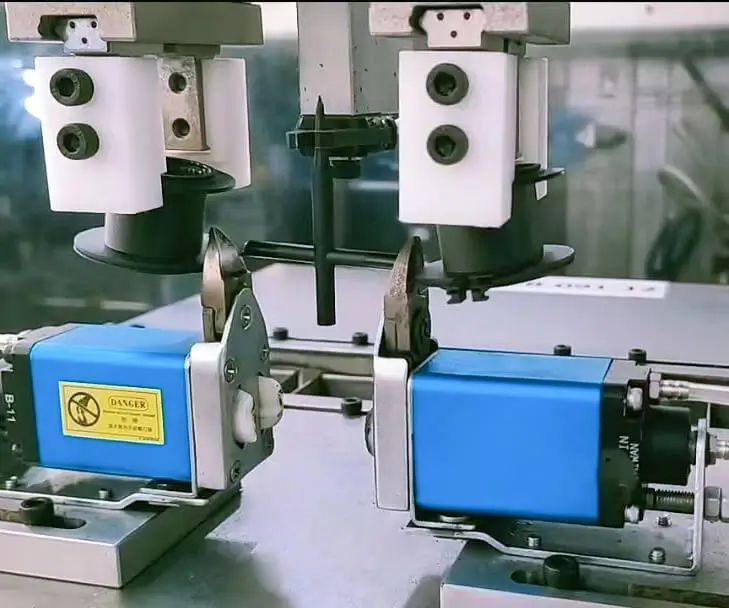The 9g micro servo motor is the unsung hero of the maker world. Small enough to fit in your palm yet powerful enough to bring your wildest Arduino projects to life, this unassuming device is a playground of possibilities. Whether you’re a seasoned tinkerer or a curious beginner, the marriage of this tiny servo and Arduino’s open-source ecosystem is a match made in creative heaven. Let’s dive into why this duo is a must-have for anyone itching to build something that moves, reacts, or just plain wows.

What Makes the 9g Micro Servo Special?
Weighing just 9 grams and measuring 23mm x 12mm x 29mm, this servo is the definition of “small but mighty.” Its compact size belies its torque (1.6kg/cm at 4.8V), making it ideal for projects where space and weight matter—think drones, robotic arms, or even animatronic Halloween props. Unlike bulkier servos, the 9g version slips into tight spaces without sacrificing performance. Plus, its affordability (often under $5) means you can stock up without breaking the bank.
But the real magic happens when you pair it with an Arduino. Arduino’s simplicity and versatility let you program precise movements, automate tasks, or respond to sensors. Imagine a plant-watering robot that pivots toward sunlight or a mini catapult that launches candy across the room. The servo’s 180-degree rotation range gives you just enough control to make things interesting without overcomplicating your code.
Getting Started: Wiring and Basic Code
Let’s strip away the intimidation. Hooking up a 9g servo to an Arduino Uno is as straightforward as it gets. You’ll need three wires: power (red), ground (black/brown), and signal (yellow/orange). Connect the servo’s power and ground to the Arduino’s 5V and GND pins, respectively. The signal wire goes to any digital pin—let’s say pin 9.
Now, the code. Arduino’s built-in Servo library does the heavy lifting. Here’s a barebones script to make the servo sweep back and forth:
```cpp
include
Servo myServo; int pos = 0;
void setup() { myServo.attach(9); }
void loop() { for (pos = 0; pos <= 180; pos += 1) { myServo.write(pos); delay(15); } for (pos = 180; pos >= 0; pos -= 1) { myServo.write(pos); delay(15); } } ```
Upload this, and your servo will dance like it’s at a robot disco. The delay(15) controls the speed—tweak it to make the movement faster or slower. This basic example is your launchpad. From here, you can integrate sensors, buttons, or even Bluetooth modules to create interactive systems.
Project Idea #1: The “Moody Plant”
Let’s put theory into practice. Build a plant that physically reacts to its environment. Use a soil moisture sensor and a light-dependent resistor (LDR) to detect dryness and shade. When the soil gets too dry, the servo tilts a tiny watering can. When it’s too dark, the servo rotates a small mirror to reflect light onto the plant. It’s equal parts functional and absurd—a perfect conversation starter for your desk.
Why it works: This project teaches sensor integration and conditional logic. Plus, it’s a gentle reminder that even machines can have a little personality.
Project Idea #2: Robotic Arm for Miniature Worlds
Why should full-scale robots have all the fun? With four 9g servos, some cardboard, and a dash of patience, you can build a robotic arm that picks up LEGO bricks, rearranges dollhouse furniture, or serves you toothpicks. The key here is mechanical design. Use popsicle sticks or 3D-printed parts for the arm segments, and attach the servos as joints.
Control it with a joystick module or program a sequence of movements. Want to troll your cat? Program the arm to dangle a feather toy at unpredictable intervals. The servo’s precision ensures your cat stays entertained (and mildly confused).
Pushing Boundaries: Solar Tracker
Harness the sun’s power—literally. Build a solar tracker that uses two light sensors and a 9g servo to keep a small solar panel angled toward the light. As the sun moves, the servo adjusts the panel’s position, maximizing energy efficiency. It’s a practical application that demonstrates how microcontrollers and servos can contribute to sustainable tech.
Pro tip: Add a second servo for a dual-axis tracker. Now you’re not just building—you’re engineering.
Troubleshooting Common Hiccups
Even the best projects hit snags. If your servo jitters or refuses to move, check your power supply. The Arduino’s 5V pin can struggle with multiple servos; use an external battery pack for heavier loads. Overheating? Give the servo breaks between movements—it’s tiny, not invincible.
And if your code feels stuck, remember: the Servo library doesn’t play nice with some PWM pins. Experiment with different digital pins or dive into the ESP32’s servo capabilities for more advanced control.
The Bigger Picture: Why This Matters
The 9g micro servo isn’t just a tool; it’s a gateway to computational thinking. Every project forces you to break down problems, iterate designs, and debug relentlessly. It’s problem-solving with a side of whimsy. When a 9-year-old builds a servo-driven drawing bot or a retiree automates their bird feeder, they’re not just making gadgets—they’re learning to speak the language of technology.
Your Turn: What Will You Create?
The beauty of the Arduino and 9g servo combo is that it scales with your ambition. Start small: make a twitching Halloween decoration. Then escalate: build a hexapod robot with 18 servos. The only limit is your willingness to experiment—and maybe your stock of hot glue sticks.
So grab a servo, fire up the Arduino IDE, and remember: every big idea starts with a tiny movement.
This article intentionally avoids step-by-step tutorials to instead spark curiosity. The goal isn’t to handhold but to ignite that “what if?” spark—because the best projects begin with a question, not a manual.











































